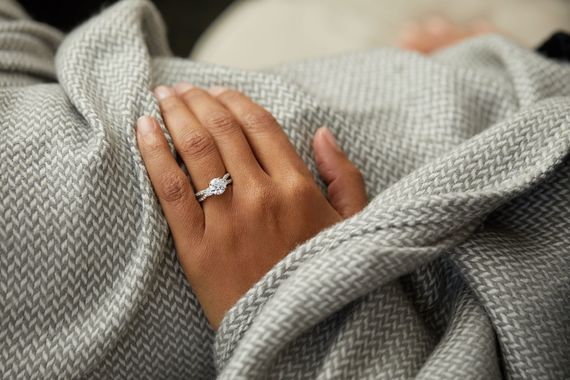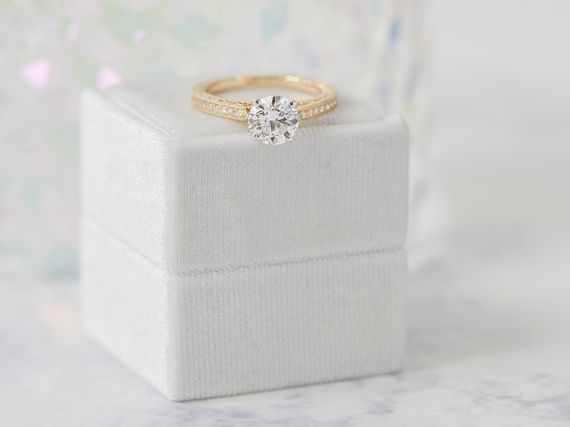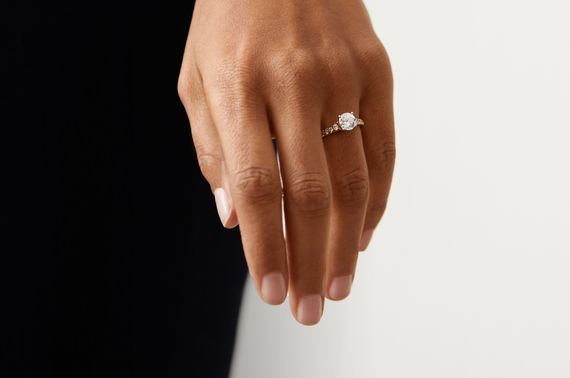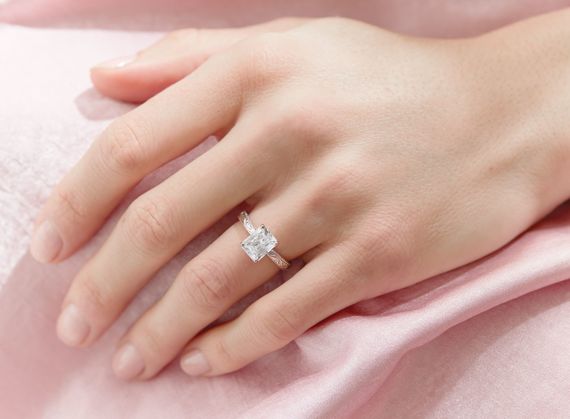An engagement ring? An eternity ring? A big birthday gift? Nothing says luxury like a diamond. But what about the sustainable alternatives?
While many have heard about the ethical ramifications the mined diamond industry has faced over the years, a lot of people are unaware of the environmental impact that diamond mining can have. From the land displaced to dig or explode the gems out of the ground, to the small towns that often have to be set up for months on end for excavation, the impact to the earth is insurmountable. Thankfully, there are tons of mined diamond alternatives to choose from that will make your footprint smaller and your significant other just as happy.
1. Lab-created diamonds
If you’re searching for a mined diamond alternative with the authenticity of a ‘natural’ diamond and without the ethical and environmental impact, then look no further than a lab-grown diamond.
With the same physical and chemical properties as a mined diamond, man-made stones are simply grown in a lab versus being grown in the earth. Although their differences are minimal, lab-grown diamonds reign supreme. Here’s why:
- Their physical, chemical and optical properties are the same
- Lab-grown diamonds are up to 40% less expensive
- Lab-created diamonds are grown in a controlled environment and the only way to ensure a 100% ethically sourced stone.

A three stone setting diamond ring.
And while it might seem that lab-created diamonds have just landed on the market, variations of these stones have been available since the 1950s. By the 1980s they were widely available but it is only in the last few years that the quality, craftsmanship, and precision arose to what's on the market today.
In terms of cut, color, clarity, and carat, lab-grown diamonds are indistinguishable compared to mined diamonds. The dream!
It’s important to point out the difference between lab-grown diamonds and all of the other gems on this list. Lab-created diamonds are diamonds. Period. You might hear them referred to as ‘synthetic diamonds’, but the FTC actually advises against this terminology, as it makes it seem as though they are not real. However, the other diamond alternatives that we’ll be touching on are all diamond simulants. This means they are non-diamond gems made to replicate the look or some properties of diamonds.
2. Moissanites
Created from the mineral silicon carbide, these diamond alternatives are fascinating, as they literally come from space! Moissanite is commonly used as a diamond alternative due to its shimmering appearance, durability, and lower price tag.

A round yellow gold ring from Clean Origin.
Silicon carbide was discovered in 1893, by the French scientist Henri Moissan, who was examining samples of rock that came from a meteor crater. For years it was thought that this mineral actually was diamond but in 1904 it was found to be made of silicon carbide and not carbon. Today, given the rarity of this meteoric mineral, moissanite is created in laboratories.
The wonderful benefits of moissanite are its cost and durability. A moissanite round 8mm (about the size of 2 carats) would cost under $2,000. They also scored just 0.75 below a diamond on the Mohs scale of hardness.

A classic style setting from Clean Origin.
3. Gemstones
While many may have heard of cubic zirconia, there are also a few gemstones that can fall into this category because of their clear appearances, such as quartz and white sapphire.
Although not quite as popular, these are fabulous options for a fiance-to-be who is looking for something unique. These stones appear icy in color and are much more affordable than mined or lab-grown diamonds. A 7mm round white sapphire runs around $2,000.
White Sapphire is also the birthstone of September, making it a great choice for Virgos or Libras born this month!

An emerald diamond from Clean Origin.
4. Pure metal rings
Of course, if you’re not interested in diamonds, simulants, or gemstones at all, going with a simple metal ring is also always a great alternative option. This is especially true if you live a super active lifestyle and are worried about damaging your ring.
The only thing to keep in mind is the source of the metal. If you’re going with an alternative due to the ethical implications, make sure you’re buying a metal band made from recycled gold!
At the end of the day, it is up to consumers to force change in industries that have perpetuated negative practices. By choosing a mined diamond alternative, you’re doing just that! Educate yourself about all of your options and choose the one that is best for you and your significant other.



